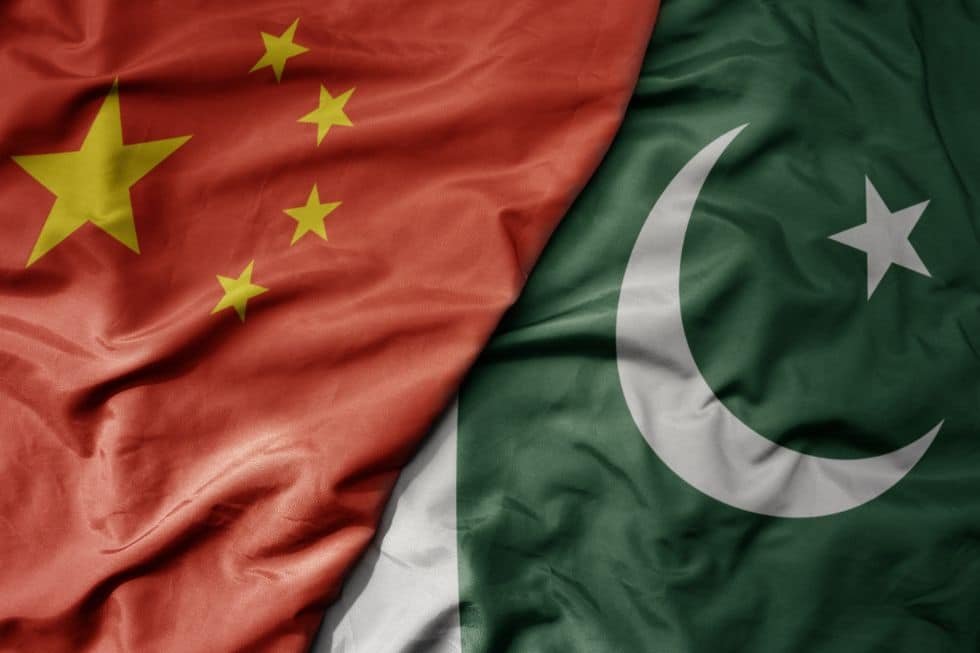“Alliances born of compulsion rarely endure; partnerships shaped by illusion, even less so.”
For decades, the world has viewed the China–Pakistan relationship as one forged in steel and tested by time. From diplomatic niceties describing it as “higher than the Himalayas, deeper than the oceans and sweeter than honey” to strategic analysts considering it the cornerstone of Beijing’s South Asia strategy, the image of an unbreakable China–Pakistan axis has been carefully curated and widely accepted.
At its core, this partnership has always been influenced by a third player: India. Since the 1960s, when China and Pakistan grew closer after both fought wars against India, their relationship has been less about a shared destiny and more about a common opposition. Pakistan, a nuclear-armed nation locked in fierce rivalry with India, has long looked for outside supporters. China, cautious of India’s rise and aligned against the US during the Cold War, viewed Pakistan as a strategic counterbalance.
However, behind the fancy facades and formal handshakes, there is a more complicated, uneasy reality. China’s support for Pakistan is becoming more about transactions, caution and perception management rather than a true alliance. What exists today is not a strategic partnership but a shadow play — a carefully staged illusion created by China to serve its broader geopolitical goals.
At the heart of this illusion lies a story of divergence and dependency, mistrust and manipulation, where China plays the role of both benefactor and puppeteer, and Pakistan appears more as a client state than a strategic partner.
Historical roots of the partnership
The relationship traces back to the early 1950s, when Pakistan became one of the first Muslim-majority nations to recognize the newly founded People’s Republic of China (PRC). During the Cold War, Pakistan was formally allied with the US through pacts like the Southeast Asia Treaty Organization (SEATO) and the Central Treaty Organization (CENTO), but it also cultivated ties with Beijing. The 1962 Sino-Indian War, in which China humiliated India, marked a turning point: Pakistan saw an opportunity to align with Beijing against their common rival.
Throughout the 1965 and 1971 wars between India and Pakistan, China provided Islamabad with diplomatic backing and limited military support. By the late 1970s, the relationship had grown into one of arms sales and intelligence sharing. China reportedly assisted Pakistan’s nuclear weapons program in the 1980s, even as Islamabad fought alongside the US in the Afghan jihad against the Soviet Union.
By the 1990s, as India’s economy opened and its global profile rose, both Beijing and Islamabad leaned more heavily into their partnership. The 2015 launch of the China–Pakistan Economic Corridor (CPEC) — a $62 billion flagship component of China’s Belt and Road Initiative (BRI) launched in 2015 — symbolized how the relationship had expanded beyond defense into economic and infrastructural domains.
The illusion of China’s solidarity with Pakistan
The so-called military solidarity between the two is perhaps the most visible example of the illusion. While Pakistan imports a significant volume of military hardware from China, the quality and nature of that equipment reveal an entirely different story.
The JF-17 Thunder, for instance, a symbol of Sino-Pakistani defense cooperation, is based on aging Chinese designs from the 1980s and lacks the technological finesse of modern fighters. Naval vessels transferred to Pakistan are often second-line platforms or soon-to-be-retired ships, technologically inferior to those China sells to wealthier clients in the Middle East.
Beijing’s policy of withholding core technology and embedding proprietary maintenance systems ensures that Islamabad remains perpetually dependent. Instead of empowering Pakistan as a defense partner, China has created a tightly managed arms dependency loop, reminiscent not of brotherhood, but of a master-servant dynamic.
This pattern extends to the economic sphere, where the CPEC was once heralded as a transformative vision. Today, it stands as a monument to Chinese economic overreach and Pakistani mismanagement.
Infrastructure projects remain incomplete, Chinese contractors dominate operations and local resentment in Balochistan and Gilgit-Baltistan continues to simmer. When Islamabad sought relief in 2023 for CPEC loans, Beijing not only declined but also demanded stricter terms and greater security guarantees.
China’s modus operandi, in truth, has transformed Pakistan into an economic vassal, eroding its sovereignty under the guise of development. Projects that should have served Pakistan’s long-term interests now serve Chinese logistical needs and commercial profit, with limited trickle-down benefit to local populations.
In diplomacy, too, there is a growing chasm. While Beijing frequently expects Islamabad to support its positions on Xinjiang, Taiwan or the South China Sea, it offers little more than vague platitudes when Pakistan seeks reciprocal backing. When Pakistan pushed for Chinese support at the Organization of Islamic Cooperation (OIC) on Kashmir — the disputed territory at the heart of Indo-Pakistani conflict — the response was a cold prioritization of stability over sentiment.
A revealing episode occurred during Operation Sindoor in 2025, a major flare-up in hostilities between India and Pakistan. Despite Islamabad’s hopes, China refrained from any overt alignment with Islamabad. Though some limited drone surveillance assistance was reportedly provided, China avoided all escalatory actions and maintained a public posture of studied neutrality. This episode laid bare a harsh truth for Pakistan: in moments of genuine crisis, China would not risk its global interests for Pakistan’s adventurism.
The reality of China’s strategic alliance with Pakistan
The reality behind this so-called alliance is one of controlled optics and masterful perception management. Through frequent diplomatic exchanges, joint military exercises and amplified rhetoric in state media, China projects an image of unity that serves its strategic objectives. These optics are not designed for Pakistan but for India and for the West — to conjure the specter of a dual-front threat, to induce hesitation and to shape global perceptions.
But scratch the surface, and the cracks are visible. Leaked internal communications from Chinese foreign ministry sources describe Pakistan as a “strategic burden with decreasing returns.” People’s Liberation Army (PLA) affiliated think tanks quietly refer to Islamabad as a “high-maintenance partner” incapable of independent stability. The real engagement is not with the Pakistani people or civilian government, but with the Inter-Services Intelligence (ISI), Pakistan’s powerful spy agency, and the military establishment.
Beijing has embedded its technology firms within Pakistan’s digital and surveillance infrastructure. From telecom to facial recognition, Chinese systems are now interwoven with Pakistan’s internal security mechanisms. The data sovereignty implications are profound. This is not cooperation but penetration.
Among the Chinese public, the perception of Pakistan is far from flattering. On platforms like Weibo and Zhihu, one finds thinly veiled scorn. Many question the rationale of supporting a state that appears perpetually unstable and dependent. Comments such as “Why are we giving them money when they can’t manage their own country?” and “They are only our friends because they have no one else” capture the growing public disdain.
This disdain is not spontaneous. In a tightly controlled information environment like China’s, the tolerance of negative sentiment often signals a deliberate messaging strategy. Beijing appears to be preparing its own population for a possible recalibration of ties.
Exposing the fragility of the China–Pakistan relationship
For India, these fault lines present a strategic opportunity. By demonstrating calm assertiveness in the face of provocations, India has already begun to expose the illusion of Chinese-backed Pakistani deterrence. The “surgical strikes” of 2016 (cross-border raids by Indian forces after a terrorist attack in Kashmir), Balakot in 2019 (when India targeted a militant training camp in Pakistan) and Operation Sindoor in 2025 all challenged the myth of a two-front threat. Each time, China chose ambiguity over action.
India must now move further by exposing the structural fragility of the China–Pakistan nexus in international forums, bilateral engagements and information domains. At the diplomatic level, India can champion voices suppressed by CPEC in Balochistan and Gilgit-Baltistan. At the strategic level, it must continue to build military resilience and interoperability with like-minded nations such as the US, Japan and Australia, especially through platforms like the Quadrilateral Security Dialogue (the Quad).
But perhaps, most importantly, India must wage a narrative campaign to show that it is China, not the West, that exploits weaker partners under the guise of friendship. The world needs to see the reality behind the mirror: a superpower that prioritizes dominance over dignity and a neighbor increasingly reduced to vassalage.
The West also faces a choice. Strategic silence on the China–Pakistan axis only emboldens authoritarian entrenchment. Western powers must demand transparency in BRI projects, support democratic institutions in Pakistan and deny access to dual-use technologies that could be leveraged for coercion.
Islamic nations, too, must ask hard questions. How can they remain silent on Xinjiang? How long will they allow Pakistan to speak for Islam while ignoring China’s persecution of Muslims? India, with its pluralistic democracy and one of the world’s largest Muslim populations, offers a more honest, if imperfect, model.
The China–Pakistan relationship is not a brotherhood forged in steel but a performance built on sand. The illusion persists only because the world has not yet dared to look behind the curtain. It is time we did. In war and diplomacy alike, the greatest weapon is clarity. Let us not be deceived by crafted shadows.
[Shokin Chauhan first published a version of this piece on Substack.]
[Kaitlyn Diana edited this piece.]
The views expressed in this article are the author’s own and do not necessarily reflect Fair Observer’s editorial policy.
Support Fair Observer
We rely on your support for our independence, diversity and quality.
For more than 10 years, Fair Observer has been free, fair and independent. No billionaire owns us, no advertisers control us. We are a reader-supported nonprofit. Unlike many other publications, we keep our content free for readers regardless of where they live or whether they can afford to pay. We have no paywalls and no ads.
In the post-truth era of fake news, echo chambers and filter bubbles, we publish a plurality of perspectives from around the world. Anyone can publish with us, but everyone goes through a rigorous editorial process. So, you get fact-checked, well-reasoned content instead of noise.
We publish 3,000+ voices from 90+ countries. We also conduct education and training programs
on subjects ranging from digital media and journalism to writing and critical thinking. This
doesn’t come cheap. Servers, editors, trainers and web developers cost
money.
Please consider supporting us on a regular basis as a recurring donor or a
sustaining member.
Will you support FO’s journalism?
We rely on your support for our independence, diversity and quality.








Comment